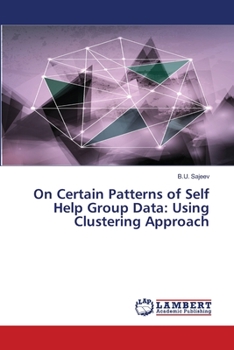On Certain Patterns of Self Help Group Data: Using Clustering Approach
Select Format
Select Condition 
Based on Your Recent Browsing
Book Overview
No Synopsis Available.
Format:Paperback
Language:English
ISBN:3659556459
ISBN13:9783659556456
Release Date:June 2014
Publisher:LAP Lambert Academic Publishing
Length:168 Pages
Weight:0.56 lbs.
Dimensions:0.4" x 6.0" x 9.0"
Customer Reviews
5 customer ratings | 5 reviews
There are currently no reviews. Be the first to review this work.





















